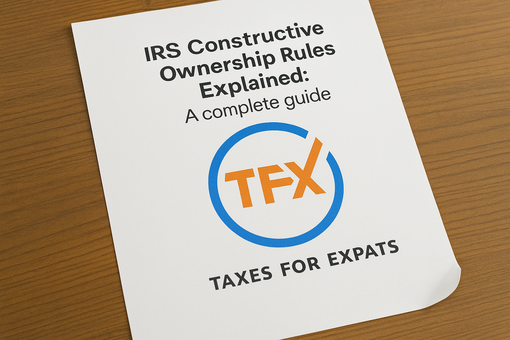How our CPAs helped a client save $56K and avoid double taxation
By getting help from our CPAs, the client effectively "saved = earned" over $56,000 in net savings while avoiding complex double taxation issues.
Names and certain numerical data have been adjusted for our client’s privacy. While the scenario reflects a real case handled by TFX CPAs, personal identifiers have been altered for confidentiality. At TFX, we prioritize client privacy and never disclose personal info without explicit consent.
background
Alex P. (not their real name) approached us with a challenging tax scenario as a dual taxpayer living in New Zealand while holding US citizenship.
Their income sources included:
- IRA distribution (US-source)
- Royalty income (US-source)
- Wages, rental income, and interest income (New Zealand-source)
New Zealand claimed taxation rights on all income due to residency, while the US asserted rights based on citizenship and source.
Although the tax treaty between the two countries offered double relief, applying it correctly was not straightforward. Missteps could lead to overpayments or penalties.
The problem
The client faced three main challenges:
- Double taxation risk: Both countries claimed the right to tax US-source income.
- Tax treaty complexities: Determining which country was responsible for providing relief for each income type.
- State tax complications: Pennsylvania’s taxation of royalties added another layer of complexity.
How our CPAs solved it
1. Income source identification
- IRA distribution: Confirmed as US-source due to contributions made during US residency.
- Royalty income: Classified as US-source because the land (a natural resource site) is located in Pennsylvania.
- New Zealand income: Identified wages, rental income, and interest income as New Zealand-source under local tax laws.
2. Treaty-based tax relief
Our CPAs interpreted the US-New Zealand tax treaty to correctly assign tax relief:
- IRA relief: Provided by the US as the source country.
- Royalties relief: Provided by New Zealand under residency-based taxation rules.
3. State-level relief
Pennsylvania’s right to tax royalty income was recognized, and our CPAs explored state-level credits and deductions to reduce the burden.
4. Foreign tax credit alignment
Decoded New Zealand’s non-standard tax year (April–March) and aligned it with the US calendar year to calculate foreign tax credits for wages, rental income, and interest income.
5. Cross-border collaboration
Worked with the client’s New Zealand accountant via video calls and email to verify:
- Proper classification of income.
- Correct application of relief in both countries.
Results
Our CPAs successfully:
✔️ Identified and applied treaty provisions to avoid double taxation.
✔️ Ensured correct relief claims in the appropriate country.
✔️ Mitigated Pennsylvania’s state tax burden on royalties.
✔️ Accurately calculated foreign tax credits by aligning tax years and payments.
Client savings
⭐ US tax savings: Approximately $10,000 over three years.
⭐ New Zealand tax savings: An estimated $50,000–$60,000 over three years.
⭐ Total net savings: Over $56,000 after fees.
Having similar tax challenges?
Let our CPAs tailor solutions for you
PS What exactly did Alex turn for (services)?
The main service client engaged us for was the Streamlined Procedure, with an additional service – Certification Letter.
Due to the complexity of their situation, Alex also needed the following services:
- Several US state returns
- Multiple rental properties
- PFICs (Passive Foreign Investment Companies)
- Amended returns


